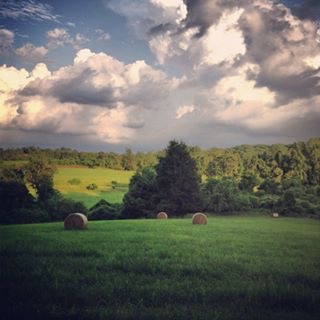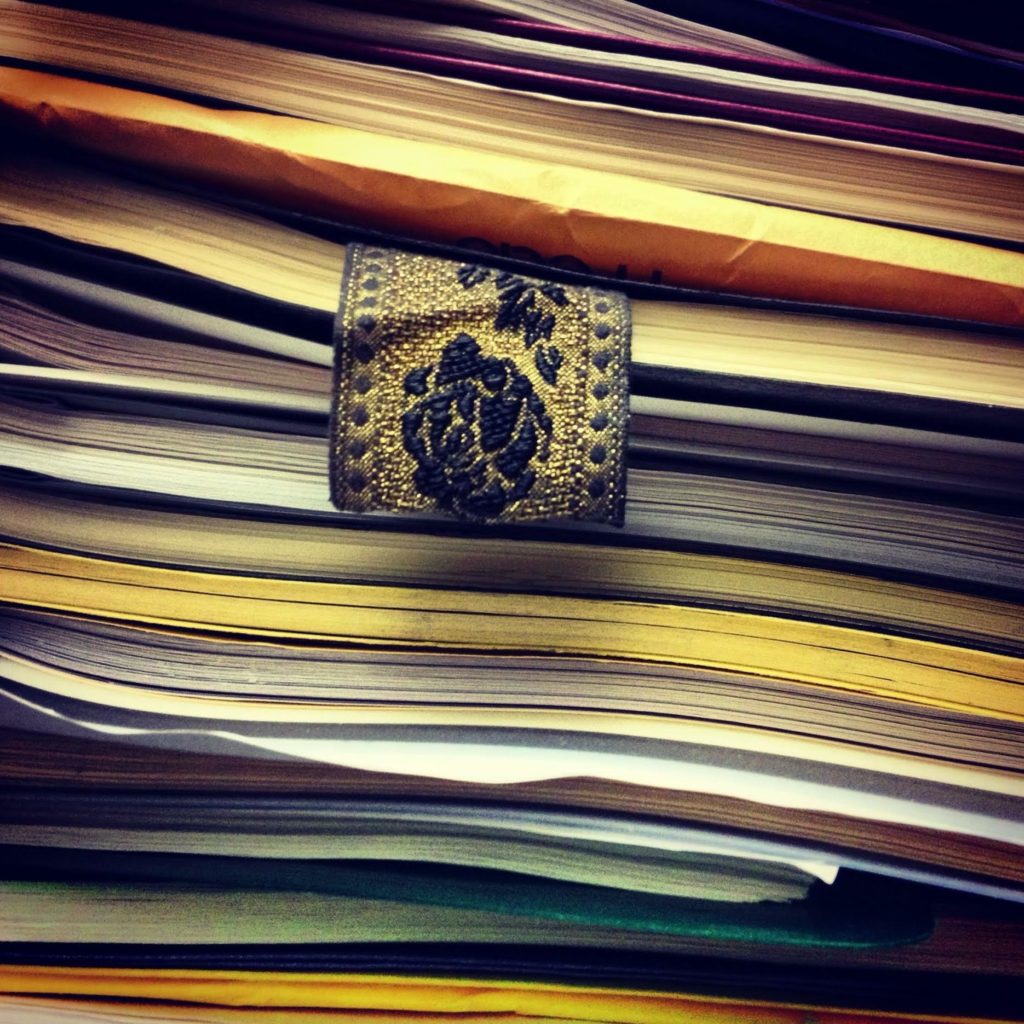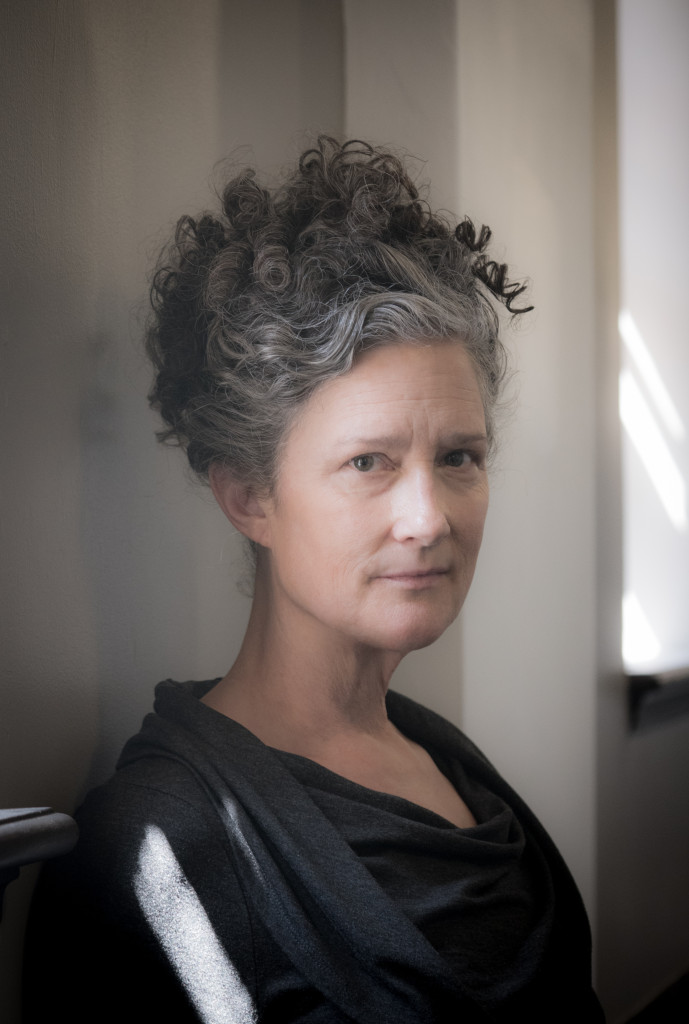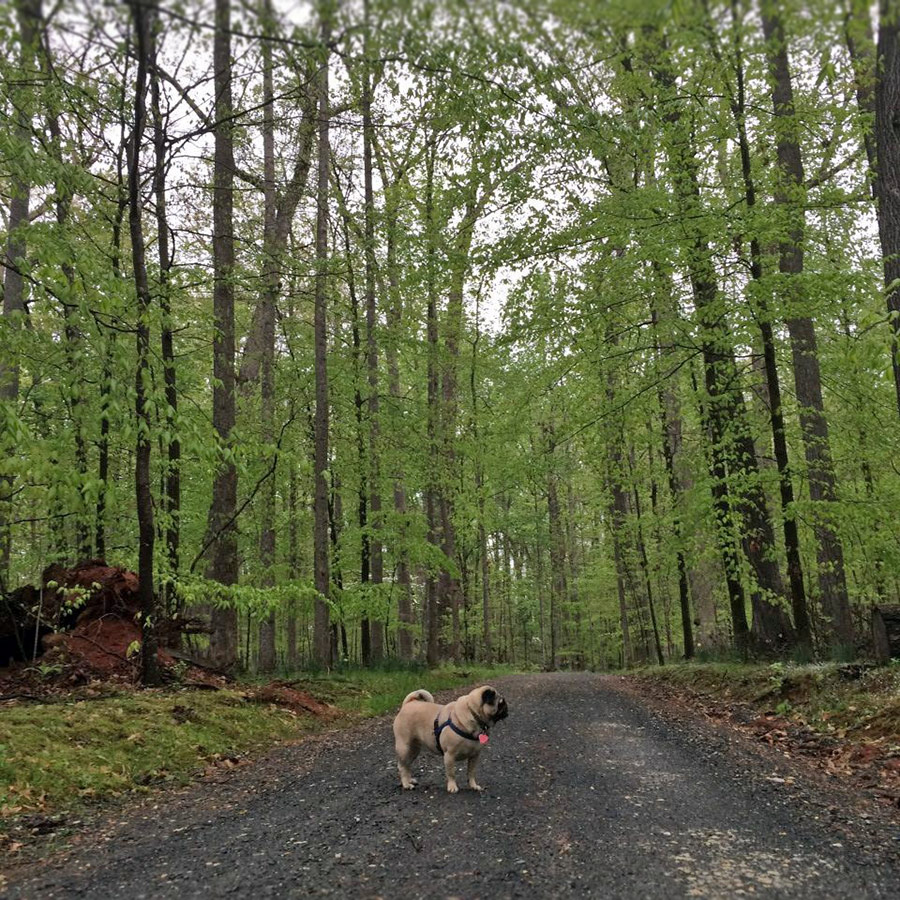Carrie Brown is the author of seven novels – Rose’s Garden, Lamb in Love, The Hatbox Baby, Confinement, The Rope Walk, The Last First Day, and The Stargazer’s Sister — as well as a collection of short stories, The House on Belle Isle. Her short stories and essays have appeared in a wide variety of literary journals, including the Southern Review, Glimmer Train, Tin House, the Oxford American and the Georgia Review.
Born in Connecticut in 1959, and a graduate of Brown University and the University of Virginia, Brown has been the recipient of numerous awards and fellowships, including a National Endowment for the Arts fellowship, the Barnes & Noble Discover Award for her first novel, Rose’s Garden, the Janet Heidinger Kafka Prize for work by an American woman writer, the Great Lakes Book Award, and, twice, the Library of Virginia Award for the best work of fiction by a Virginia author. Her books have been chosen as community reads books in Iowa and Virginia, and her work has been translated into several languages. She has read and lectured at colleges, universities, and bookstores across the country.
She has taught creative writing for many years, including at Hollins University, where she was the Distinguished Visiting Professor of Creative Writing, the University of North Carolina-Greensboro, Deerfield Academy in Massachusetts, where she was the Wilson Fellow, and, for most of her teaching career, at Sweet Briar College, where she and her husband, the novelist John Gregory Brown, make their home and where she is now the Margaret Banister Writer-in-Residence.
Over their nearly twenty-five years at Sweet Briar, Carrie and John Gregory have hosted many of the world’s most distinguished poets, fiction writers, and essayists for readings, classroom discussions, lectures, and residencies. It has been their privilege and pleasure to welcome so many writers into their home and to share with them Sweet Briar’s beautiful campus – its pastoral fields and forests, its lakes and streams and trails — in the foothills of the Blue Ridge Mountains.
Carrie and John Gregory raised their three children on campus at Sweet Briar. Now their children are grown, and so Carrie and JGB hold down the fort together assisted by their dog, the famous James Brown.
What better gift than a book? If you’re interested in purchasing an inscribed copy of The Stargazer’s Sister, please contact her to learn more.
“A novelist who understands that the forest is in the leaf.”
“Like the work of Alice Munro, Carrie Brown’s stories combine the novel’s wide reach with the distilled poetry of the best short fiction… Marvelous journeys of both place and mind.”
“[One feels] the presence in these pages of Flannery O’Connor, Eudora Welty, and Katherine Anne Porter.”
“Brown’s writing… conveys intense events and emotions with a deceivingly gentle touch.”
“These tales linger in the imagination like revelatory dreams. The plots are original, and Brown’s sumptuous use of language is as exciting as it is elegant and exact. Her tales charm even as they chill.”
Book Clubs
 The spread of book groups across the country – in living rooms and bookstores, in restaurants and coffee shops and bars — has been a wonderful development, and I am always happy to learn that a group of readers has chosen one of my books for discussion. It’s lovely to be able to join such groups in person – and I welcome invitations from those within an easy driving distance of Sweet Briar, VA – but I’ve also spoken to book clubs by Skype and over the phone.
The spread of book groups across the country – in living rooms and bookstores, in restaurants and coffee shops and bars — has been a wonderful development, and I am always happy to learn that a group of readers has chosen one of my books for discussion. It’s lovely to be able to join such groups in person – and I welcome invitations from those within an easy driving distance of Sweet Briar, VA – but I’ve also spoken to book clubs by Skype and over the phone.
Many of my books have readers’ guides with provocative questions to help spur your discussions. I can also answer questions about specific books or about the writing life (a limited number, anyway!) from book clubs by email. Please contact me if you’d like me to join your book club in the conversation.
Videos
A Well-Lighted Place — 3/2/2011
Carrie is interviewed by Max Pearlstein for A Well-Lighted Place.
“A Well-Lighted Place” is named after the Ernest Hemingway short story, “A Clean, Well-Lighted Place.” While Hemingway’s place was a cafe where an old man could find an escape from loneliness, this place is anywhere that a writer has access to a webcam and an Internet connection. The only requirement is that the location is lit well enough for him or her to show up decently over the computer.
Colgate Writers’ Conference — 2011
Carrie delivers a lecture, “The Difficult Art of Happiness.”
Colgate Living Writers — 2010
Carrie Brown and her husband John Gregory Brown participated in Colgate University’s Living Writers Series where they appeared side by side to talk about their work and their partnership on and off the page.
John Gregory Brown was born and raised in New Orleans. He is the author of the novels Decorations in a Ruined Cemetery (1994), The Wrecked, Blessed Body of Shelton Lafleur (1996), and Audubons Watch (2001). His honors include a Lyndhurst Prize, the 1994 Lillian Smith Award, the 1996 Steinbeck Award, and the 2002 Louisiana Endowment for the Humanities Book of the Year Award. He is the Julia Jackson Nichols Professor of English and director of the Creative Writing program at Sweet Briar College in Virginia.
The Writing Life — 2007
Journalist Ron Charles talks with Carrie on The Writing Life.
The Writing Life, an award-winning literary talk show hosted by well known Baltimore-Washington writers, features guests ranging from interesting newer writers to some of the most distinguished names in contemporary letters.
Carrie on Writing
On Writing …
Trying To Be One of the People on Whom Nothing is Lost
 When I was in middle school, we were asked by a teacher to keep a daily journal for a month. The idea, I imagine, was that by asking us to pay attention to our lives, we would become more thoughtful about them, better noticers – “Try to be one of the people on whom nothing is lost,” recommended Henry James — and more careful writers of sentences. I wrote dutifully for a few days, mulishly recording the boring, unremarkable circumstances of my life, which was — blessedly — without real conflict. I woke up, I went to school, I came home, I ate dinner, I watched television, I did my homework. All very dull material. Woe was me; I had no problems. What a wretched circumstance for a writer. After a few days, I was deeply bored of this exercise. So I began to make things up.
When I was in middle school, we were asked by a teacher to keep a daily journal for a month. The idea, I imagine, was that by asking us to pay attention to our lives, we would become more thoughtful about them, better noticers – “Try to be one of the people on whom nothing is lost,” recommended Henry James — and more careful writers of sentences. I wrote dutifully for a few days, mulishly recording the boring, unremarkable circumstances of my life, which was — blessedly — without real conflict. I woke up, I went to school, I came home, I ate dinner, I watched television, I did my homework. All very dull material. Woe was me; I had no problems. What a wretched circumstance for a writer. After a few days, I was deeply bored of this exercise. So I began to make things up.
I transformed my gentle parents’ happy marriage into a hotbed of strife. I cast myself as the neglected, sorrowful child with oppressive levels of responsibility on her fragile young shoulders. I recast our home, lovingly tended to by my mother – a good cook and gardener, a knitter and a seamstress — into a squalid house of horrors. I sent my mild-mannered, cheerful father on long trips to distant and dangerous and probably unbelievable places, and I think I gave him a mistress, as well. I believe I described scenes in which I sat on the roof of our house and contemplated the existential loneliness and tragedy of my condition and, perhaps throwing myself off. I can’t remember now all the lies I told, but they were sufficiently alarming that after some time my mother was summoned to school, and I was brought inevitably to the teacher’s office, where the important distinction between truth and fiction was impressed upon me.
I had worried people.
I was ashamed… and I was interested.
I had understood something important about storytelling, which is that there must be a problem — a conflict, as we like to say in creative writing classes – in order for the story to be interesting. I had bored myself silly with tedious accounts of geometry homework and supper and sentimental and overwritten descriptions of autumn.
But I remember that, that it was autumn.
I remember that it was autumn, because I remember the chill in the air, the coolness of the pane of glass in the window in my bedroom when, alone and restless, contemplating the blank page of my journal, I put my hand to it at night. I remember the melancholy mist on the pond behind our house in the early morning, the willow trees overhanging the black surface of the water, the pair of geese who came together – were they the same pair every year? I wanted to think so — and then one day vanished. I remember the smell of leaves burning. I remember the woman who stood in a closet behind a counter and took the coats in the restaurant where my extended family ate meals occasionally on Sunday nights. I remember the glamour of her black hair piled high on her head, the absolute blankness of her expression, a cigarette smoldering in the ashtray on the counter. I remember that I was afraid of her, that I was comforted when I could take my protected place at the table between my cousins and given a Shirley Temple. I remember, when I look back at that time, that I was worried in a solipsistic way about myself – about how complicated and difficult and anxiety-producing it was to make and keep a friend, about how impossible it seemed that any boy would ever love me, about whether I had anything to offer the world.
 Yet for all my lies in that awful record of my early adolescent existence, I was also telling a kind of truth. I knew, because even a happy child knows it in her bones, that the world was full of mystery and sometimes a bodily grief, that one could sit on the roof of one’s house – as indeed I did, arms wrapped around my knees, in the dark – and see through the late summer leaves of the trees into the lit windows of other people’s houses, in which strangers came and went, conducting their wondrously and alarmingly strange lives. I knew – dimly — that ahead was a future in which one would irrationally want – in fact, one already wanted, only one didn’t quite yet know it — to leave a place that was beautiful and where one was loved.
Yet for all my lies in that awful record of my early adolescent existence, I was also telling a kind of truth. I knew, because even a happy child knows it in her bones, that the world was full of mystery and sometimes a bodily grief, that one could sit on the roof of one’s house – as indeed I did, arms wrapped around my knees, in the dark – and see through the late summer leaves of the trees into the lit windows of other people’s houses, in which strangers came and went, conducting their wondrously and alarmingly strange lives. I knew – dimly — that ahead was a future in which one would irrationally want – in fact, one already wanted, only one didn’t quite yet know it — to leave a place that was beautiful and where one was loved.
I made a dark story out of my life because the happy story did not seem sufficiently interesting.
We write, often, out of confusion and pain – out of the darkness of not knowing — and we believe that literature must tackle serious topics in order to be taken seriously. The darker and sadder the better, perhaps: murder and war, betrayals and lies, misery of all kinds, the ends of love affairs. Death. This is not a wrong impulse. We understand very well that drama is created out of trouble, and a story in which characters are kindly disposed toward each other and the world, for whom the world offers blessings and miracles, seems like unpromising terrain for the writer. Graphed on a screen like the line that scrolls across a heart monitor, happiness would seem to describe a perfectly straight edge, a monotonous Mid-western horizon of bovine patience and acceptance. Unhappiness, on the other hand, would be a mesmerizing performance of struggle and debasement and misery, a serrated chain of peaks and defiles. One story would appear to yield nothing but horizontal sameness, day after day; the other holds out the promise of continual interest.
Yet I am often drawn — in my own fiction and in the work of other writers — to what seems to me the considerable drama of happiness, the drama of the well-lived life, the details of the remarkable and beautiful physical world which seem to me more astonishing, more arresting, and more complicated every year, neither wholly happy, of course, nor wholly sad. I am interested in characters who are – or who want to be – courageous or kind or good, characters inclined toward the impulse for charity, characters who experience the world – occasionally, anyway — with something like spiritual rapture, characters for whom the world’s beauty arrives and then perhaps departs like a visitation of grace. This state – full of yearning, full of beauty, full of love — feels to me as powerful and as moving and as compelling as the human experience of misery or wrongdoing or tragedy. In the biblical story of Creation, dark and light, good and evil, we remember, are in equal competition for the soul of the world.
Back when I was in middle school, if I had looked more carefully and clearly at the world around me, if I had written about what I loved, about what made me happy, or about what was beautiful – as well as what troubled me – I would have produced not only a far more truthful account of my days, but also, in the end, a far more interesting one.
Carrie’s Favorite Books
(some of them, anyway, mostly fiction, mostly contemporary, and in no particular order)
- Brad Watson, Miss Jane
- Joan Wickersham, The News from Spain
- Mary Costello, Academy Street
- Steven Milhauser, Martin Dressler
- Claire Keegan, Foster
- Paul Yoon, Snow Hunters
- Tom Drury, Hunts in Dreams and Pacific
- Karen Osborn, Centerville
- Edith Pearlman, Binocular Vision
- Colum McCann, Everything in This County Must and Let The Great World Spin
- Tobias Wolff, Our Story Begins
- Justin Torres, We The Animals
- John Williams, Stoner
- Joseph Roth’s The Radetsky March and The Emperor’s Tomb
- George Saunders, The Tenth of December
- Shirley Hazzard’s The Great Fire and The Transit of Venus
- Marilynne Robinson, Gilead and Home and Lila
- Deborah Eisenberg, Twilight of the Superheroes and The Collected Stories (So Far) of Deborah Eisenberg
- Ann Patchett, Commonwealth and Bel Canto
- Julia Glass, Three Junes
- Zadie Smith, On Beauty (which should be read simultaneously with E.M. Forster’s Howard’s End.)
- Bohumil Hrabel, I Served the King of England
- Thornton Wilder, The Bridge of San Luis Rey
- Ian McEwan, Atonement and Saturday and On Chesil Beach
- Isaac Babel, The Complete Works
- Jane Austen, Emma and Pride and Prejudice
- Elizabeth Strout, Olive Kitteridge
- Harriet Doerr, Stones for Ibarra
- Kazuo Ishiguo, The Remains of the Day
- Willa Cather, Death Comes for the Archbishop
- Rohinton Mistry, A Fine Balance
- J.L. Carr, A Month in the Country
- Glenway Wescott, A Pilgrim Hawk
- William Trevor, The Collected Stories, The Hill Bachelors, and Two Lives, in particular the novella Reading Turgenev
- Alice Munro, in particular the collections Friend of My Youth, Selected Stories, and Too Much Happiness
- Anton Chekhov, the stories collected by Richard Ford with Ford’s introduction
- Patrick O’Brien, Testimonies
- Iris Murdoch, An Accidental Man
- Anne Tyler, An Accidental Tourist and The Accidental Marriage
- Sandor Marai, Embers
- Vladimir Nabokov, his memoir Speak Memory
- Ha Jin, Waiting
- Peter Taylor, A Summons to Memphis
- E. Annie Proulx, The Shipping News
- Andrea Barrett, Ship Fever
- Daniel Alercon, War by Candlelight
- Yiyun Li, A Thousand Years of Good Prayers and Gold Boy, Emerald Girl
- Eudora Welty, particularly The Optimist’s Daughter
- Flannery O’Connor, particularly A Good Man is Hard to Find and Habit of Being, her collected letters
- Elizabeth Bishop, her poetry and her collected letters, One Art
- Penelope Fitzgerald, The Blue Flower and The Bookshop
- Gabriel Garcia Marquez, Love in the Time of Cholera and One Hundred Years of Solitude
- Toni Morrison, Beloved
- Anita Brookner, Providence and Hotel du Lac
- Chang Rae Lee, A Gesture Life
- Bernardo Atxaga, Obabakoak
- Katherine Mansfield, Stories
- Elizabeth Spencer, The Stories of Elizabeth Spencer
- E.M. Forster, A Passage to India and Howard’s End
- Alice McDermott, Charming Billy and After This
- Virginia Woolf, Mrs. Dalloway and To the Lighthouse
- Michael Cunningham, The Hours (his response to Mrs. Dalloway)
- Pat Barker, The Ghost Road, The Eye in the Door, and Regeneration, a trilogy of novels about WWI
- Paul West, Love’s Mansion
- Elizabeth Bowen, The Death of the Heart
- Jhumpa Lahiri, The Namesake, Unaccustomed Earth, and Interpreter of Maladies
- Harper Lee, To Kill a Mockingbird
- Edith Wharton, The Age of Innocence
- Arundhati Roy, The God of Small Things
- Chimanamda Adichie, Americanah
- Magda Szabo, The Door
- Lee Smith, Me and My Baby View the Eclipse
- Jill McCorkle, Life After Life
- Elizabeth Graver, The End of the Point
Interviews & Articles
- Focus on Fiction with Nancy Christie
“Short Takes: Interviews with Short Story Writers” with Carrie Brown - The Southern Review
A Writer’s Insight: An Interview with Carrie Brown - James River Writers
Five Questions with Carrie Brown and John Gregory Brown - Literary Hub
The Wife (a Writer) Interviews the Husband (Also a Writer) - Blackbird
An Interview with Carrie Brown
- Blackbird
Volume 14, Number 2, Fall 2015 | Short Story: “Funeral“ - Blackbird
Volume 1, Number 1, Spring 2002 | Short Story: “Miniature Man” and Interview with Jamye Shelleby - Glimmer Train Stories
Issue 77, Winter 2011 | Short Story: “Bomb” - One Story
Issue 116, January 30, 2009 | Short Story: “A Splendid Life” and Q&A - The Faith Middleton Show on WNPR
May 5, 2008 - Tin House
Issue 66, Winter 2016 | Essay: On J. L. Carr’s A Month in the Country — “Perfect novels must have tall orders for themselves” - Writers Ask
Issue 55 | Focus Piece: “The Difficult Art of Happiness” (PDF) - Writers Ask
Issue 46 | Interview with Jennifer Levasseur and Kevin Rabalais










